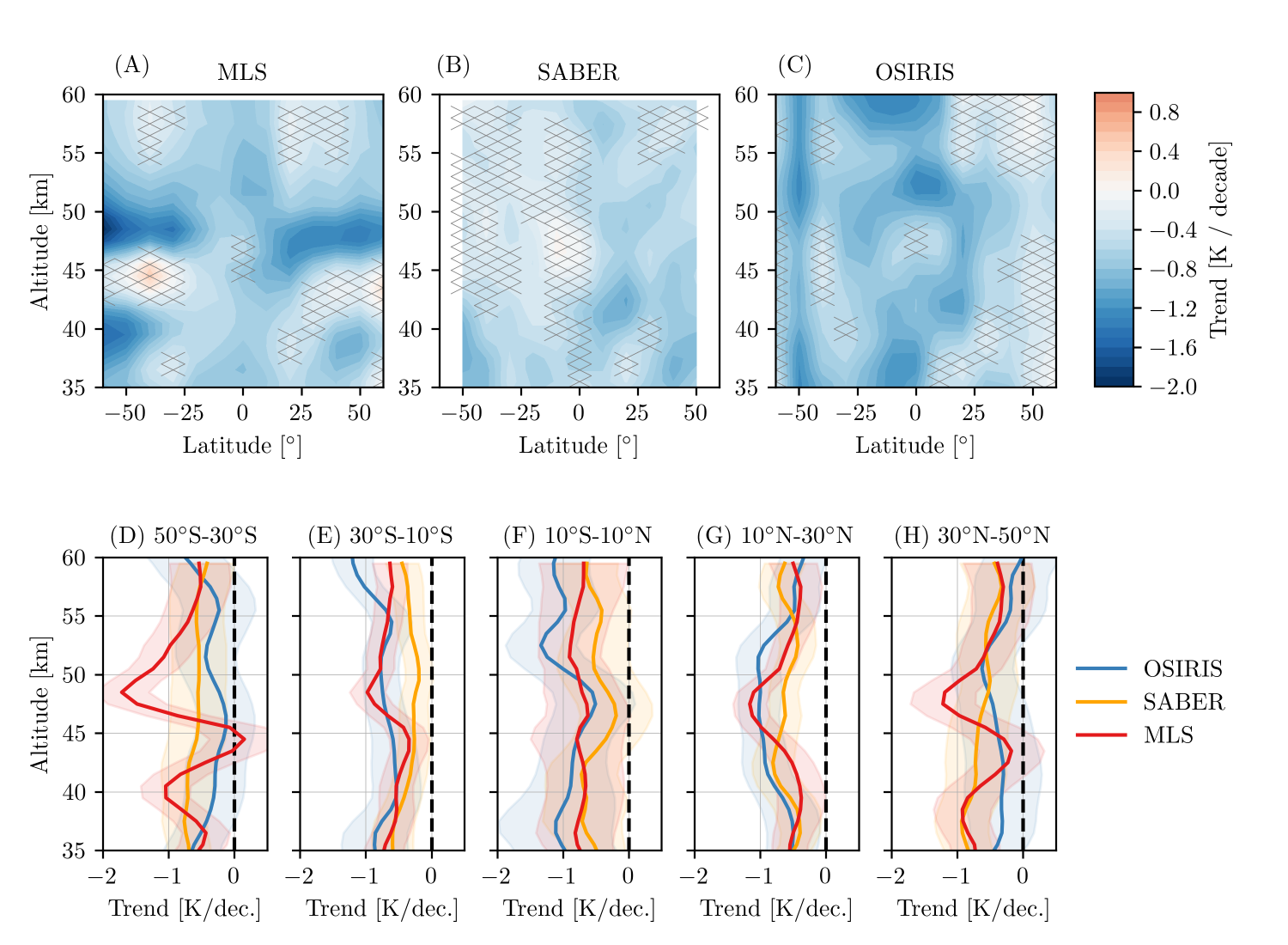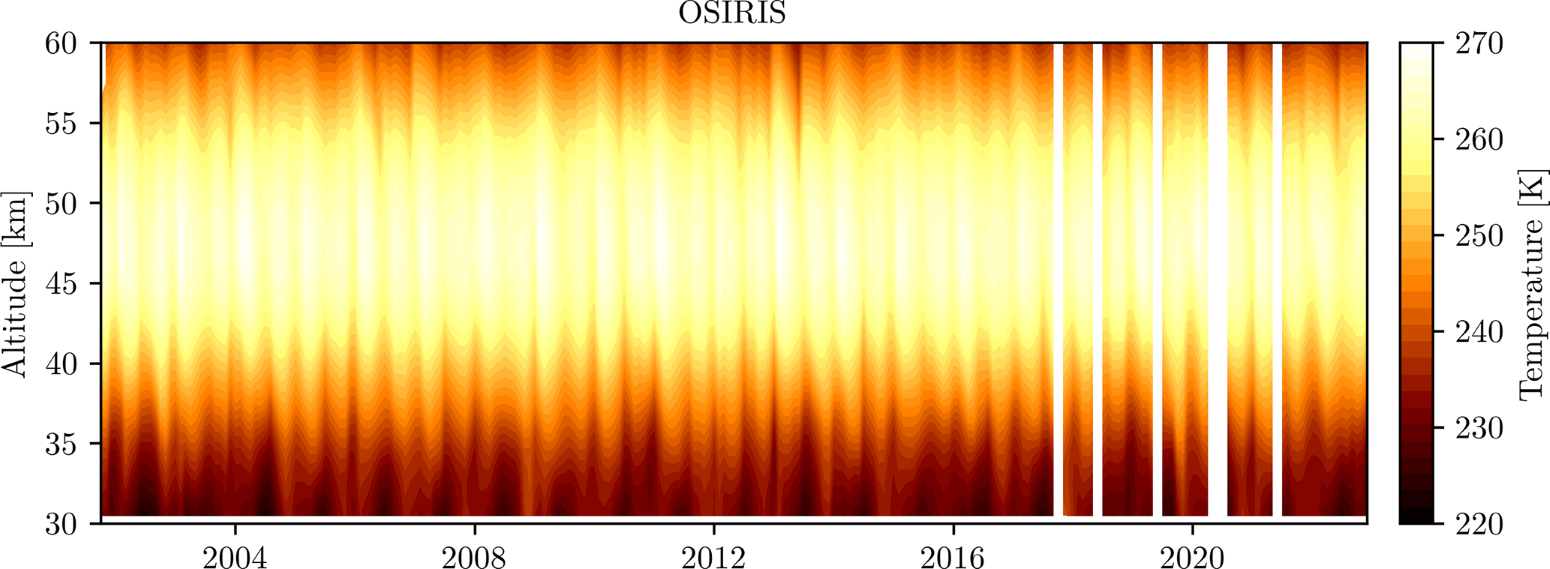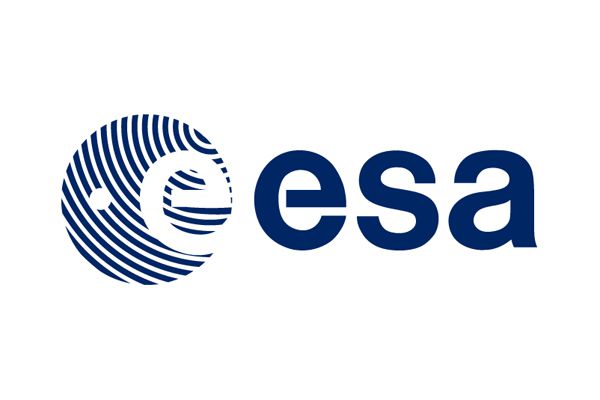New results from OSIRIS: upper-stratospheric temperature trends
Temperature trends in the upper stratosphere, particularly above ∼ 45 km, are difficult to quantify due to a lack of observational data with high vertical resolution in this region that span multiple decades. The recent v7.3 upper-stratospheric (35–60 km) temperature data product from the Optical Spectrograph and InfraRed Imager System (OSIRIS) includes over 22 years of observations that can be used to estimate temperature trends. The trends in OSIRIS temperatures over 2005–2021 are compared to those from two other satellite limb instruments: Sounding of the Atmosphere using Broadband Emission Radiometry (SABER) and Microwave Limb Sounder (MLS). We find that the upper stratosphere cooled by ∼ 0.5 to 1 K per decade during this period. Results from the three instruments are generally in agreement. By merging the OSIRIS observations with those from channel 3 of the Stratospheric Sounding Unit (SSU), we find that the stratosphere cooled at a rate of approximately −0.6 K per decade between 1979 and 2021 near 45 km, in agreement with earlier results based on SSU and MLS. The similarity between OSIRIS temperature trends and those from other records improves confidence in observed upper-stratospheric temperature changes over the last several decades.

OSIRIS temperature data products spans over 22 years
A new upper stratospheric (35–60 km) temperature data product has been produced using OSIRIS limb-scattered spectra that now spans over 22 years. Temperature is calculated by first estimating the Rayleigh scattering signal and then integrating hydrostatic balance combined with the ideal gas law. Uncertainties are estimated to be 1–5 K, with a vertical resolution of 3–4 km. Correlative comparisons with the Atmospheric Chemistry Experiment Fourier Transform Spectrometer (ACE-FTS) and the Microwave Limb Sounder on Aura (MLS) are consistent with these uncertainty estimates and generally have no regions of statistically significant drift. The temperature data product is publicly distributed as part of the recently released OSIRIS v7.3 data products. An example of the produced data is shown in Figure 1. The technique differs from previous techniques in that multiple scattering is included rigorously in the forward model, with a novel method to estimate the amount of upwelling radiation.

Chemistry Contribution to Stratospheric Ozone Depletion After the Unprecedented Water-Rich Hunga Tonga Eruption
OSIRIS data helps to unravel complex behaviour of ozone layer recovery
After decades of depletion in the 20th century, near-global ozone now shows clear signs of recovery in the upper stratosphere. In the tropical lower stratosphere, ozone is expected to decrease as a consequence of enhanced upwelling driven by increasing greenhouse gas concentrations, and this is consistent with observations. There is recent evidence, however, that mid-latitude ozone continues to decrease as well, contrary to model predictions. We use OSIRIS ozone profile measurements to show that these differences might be related to changes in atmospheric circulation.




